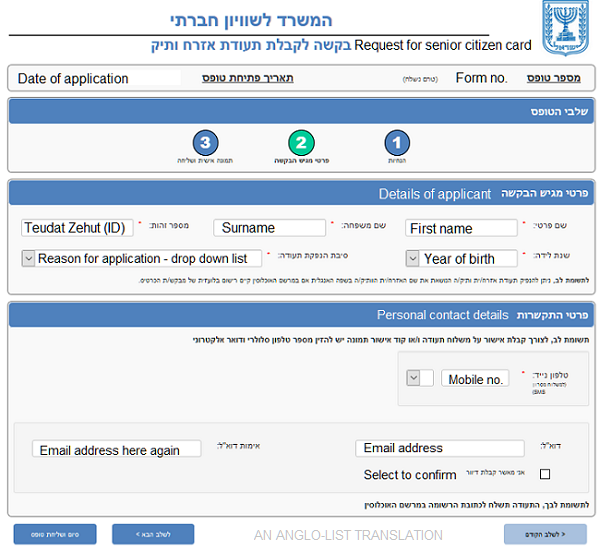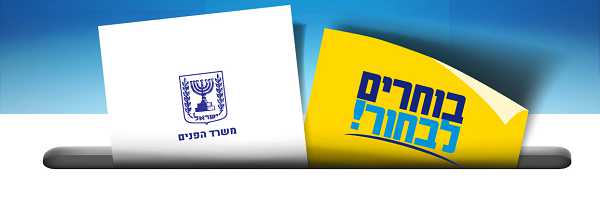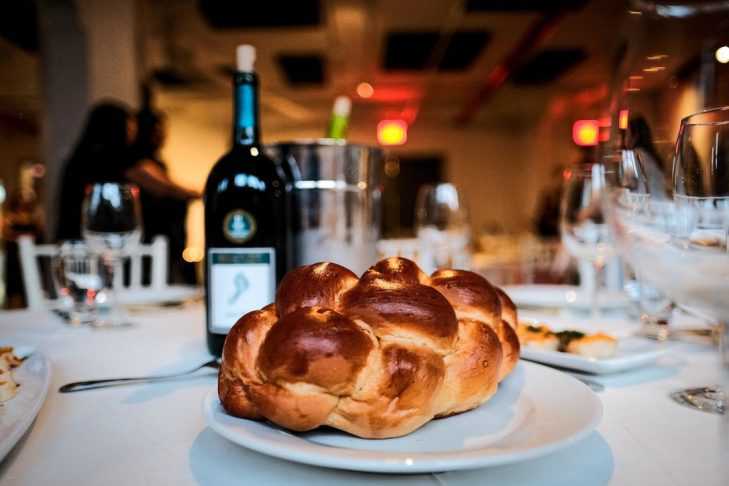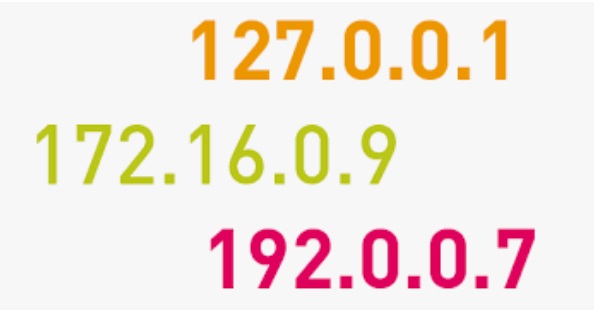Reading Time: 7 minutes
Parshat Hashavua Lech Lecha
By: Rav Nissim Mordechai Makor
 “And the souls that they made in Haran” (Bereishit 12:5)
“And the souls that they made in Haran” (Bereishit 12:5)
Rabbi Ovadiah Yosef zt”l always emphasized that patience and endurance is key to the success of bringing people close to religion. He quotes a story from the Midrash.
One day an old man who did not believe in Hashem entered the home of Abraham Abinu. Abraham immediately served him a beautiful meal to satisfy his hunger. After the meal, Abraham sat with him for hours, many hours, talking to him about believing in Hashem. After the long talk, the old man stood up and foolishly declared, “Do you want to know who created the world?” He then took out a mini-idol from his pocket and pointed to it.
At that point Abraham Avinu got fed up and angry at that old man who closed his ears to all of the words of truth that Abraham had told him. So Abraham chased him out of the house. Immediately Hashem appeared to Abraham and angrily told him, “I have endured and I have had patience with this old man already for ninety years hoping he will make teshuvah, and you couldn’t hold out with him for a few hours?”
Immediately Abraham ran out to find the old man. He found him and brought him back, and started gradually working on him. Slowly his words entered the old man’s heart, until finally he declared, “Hashem is one and His name is one!”
All Jews deserve a lot of patience from us, just as Hashem has been patient. The results are truly amazing.
Rabbi Reuven Semah
Candle lighting times for Shabbat Lech Lecha
Parsha Index
“Go away from your land – to a land that I will show you” (Bereishit 12:1)
“Every man, wise of heart, knows that the souls of the wicked are not like the souls of the Nation of Israel,” because wicked souls are from the outside world of division, whereas the souls of the righteous are from the holy world of unification. Therefore, the souls of the Jews are all considered as one, as it says, “All of Israel are united one with the other.” We also know from the Sages, of blessed memory that anything in the realm of holiness does not leave from it’s place, but it’s primary root and source remains, and from there spreads out. These are the words of Hashem to Abraham, “Go away,…” Go away, commands Hashem, to yourself and to your source; specifically, his “source” is his connection to Hashem, and the land to which he goes is the Land of Israel. So, by living in the Land of Israel, one is connected to himself, to his source – to Hashem, and his life is thereby improved and sanctified, because he himself is not the same abroad as he is in the Land of Israel. (from the Alshich)
Regarding such advantages of dwelling in the Holy Land, the Ramban writes, “Know that the judgment of Sodom was due to the superiority of the Land of Israel, since Sodom is part of the ‘Inheritance of the Eternal’ (II Samuel 20:19), and it does not tolerate men of abominations.” And see that G-d destroyed Sodom as a sign that Israel would inherit the Holy Land, for there shall be the Temple of Hashem.” According to this, we can understand the words of Kalev ben Yephuneh: “Very, very good is the [Land of Israel], but don’t rebel against Hashem.”
Insights on life from the above: “As settlers in the Holy Land, we must be very strong in the fulfillment of Torah and Mitzvot.” Thus the Gra, of blessed memory, writes, in his letters, “In the Land of Israel we must truly walk in the ways of Hashem.”
And he trusted in Hashem (Bereishit 15:6).
The Baal Shem Tov and his disciple, R’ Menachem Mendel of Ber, were walking along a deserted road. They were far from any signs of civilization; all was desolate, scorched by hot summer sun. There was no water to be found in sight, no farmhouse, no well.
“What are we going to do? We will die of thirst!” R’ Menachem Mendel said desperately.
“Where is your faith in Hashem, your Bitachon?” the Baal Shem Tov chided his disciple. “Your faith has to be strong enough for you to believe in miracles. If you really and truly have faith that Hashem can provide us with water, in this deserted, desolate spot, if you believe with your heart and soul, then He truly will! Now begin to concentrate!”
R’ Menachem Mendel closed his eyes tightly and thought deeply. Then he opened his eyes and said, “Hashem can surely provide us with water, even in this forsaken spot.”
Suddenly, a gentile appeared, as if from nowhere. “Have you perhaps seen horses roaming about? They have run away from me. I have been looking for them for the past three days but have found no trace of them.”
The two men shook their heads. “No, we are sorry, but we have seen no horses here. They must have gone in a different direction.”
The gentile was about to turn around when suddenly a thought struck him, “You look like you are very thirsty. Would you like some water? Here I have a pitcher full, much more than I need. Drink your fill.”
The two men tipped the water pitcher to their lips and drank until their thirst was quenched. Thanking the man, they continued along.
R’ Menachem Mendel turned to his teacher and said, “I am now really convinced that faith can perform miracles. But there is one thing I do not understand. The man said that he had been wandering around this area for three days in search of his horses. I know that Hashem sent him especially to quench our thirst. Why, then, did he set out three days ago?”
The Baal Shem Tov replied, “Hashem expected us to be traveling through this area. He anticipated our thirst and wanted the water to be on hand at the very moment that we needed – and prayed – for it.”
There was a quarrel between Abram’s shepherds and Lot’s shepherds. The Canaanites… were living in the land… Abram said: “Let there neither be a quarrel between us, nor between our shepherds… please go away from me: if you go to the left, I will go the right, and if you go to the right, I will go to the left” (13:7-10).
Rashi brings the tradition of what the quarrel was about. Lot’s shepherds let their sheep and cattle graze on Canaanite-owned pasture, arguing that those lands in due course would become family real-estate property: “I will give this land to your children” (12:7). In contrast, Abraham and his shepherds respected the reality that the Canaanites were at that time in possession, feeding their domesticated animals on the inferior wild grasses that were available to all.
There were arguments supporting the behavior of Lot and his shepherds. The text relates: “The Canaanites were then in the Land” (12:6). Rashi explains the significance of the word “then”. The Canaanites were in the process of conquering the Land from Abraham (and Lot’s) extended family, who were the descendants of Shem. As the Caananites took the land by force, they had less right to the pastures than Abraham and Lot who were the heirs of the previous owners.
But the basis of Abraham’s outlook was: “You shall do what is right and good in the eyes of G-d” (Deut. 6:18). Common decency: “doing what is right and good” is a product of human and ethical sensitivity. A decent person does not exploit something in the hands of others without permission.
Lot, in contrast, was a tactician, an opportunist, and a schemer. The Torah mentions that “Lot, who was going with Abram” (13:5) had acquired a great deal of material wealth. Rashi derives from those words that it was Lot’s “going with Abram” which generated his riches, and he didn’t miss a chance to let his affluence expand including when it came from dubious sources. But even that was not good enough: his eye was on the settled urbanized lifestyle of Sodom which afforded far more wealth-acquiring potential than the migratory pastoral-nomadism of Abraham and his company. Therefore he took advantage of the over-pressure on land to accede to Abraham’s request and make a “gentleman” departure: they indeed became “separated” from one another.
That, according to the Ohr HaChayim is exactly what Abraham wanted all along. G-d told Abraham, not Lot, to “go to the Land that I will show you” (12:1). Lot was not invited, nor was he wanted, but he got into the company and went with (12:4, Ohr HaChayim to 12:1), probably in the mind-frame of being ready to use the “host” when it suited him, and “ditch” him when better prospects appeared “down in the valley”. Abraham no doubt knew with whom he was dealing, but he did not turn him away as he did not want to shame him; he was after all his orphaned nephew. He hoped that Lot would turn himself away from him on his own accord when the time came. The quarrel, when it happened, reflected badly on Abraham as well as Lot: the Ohr HaChayim suggests that as Lot was related to Abraham, their respective shepherds wrongly saw Abraham as being of similar character to Lot.
Abraham’s dilemma of stepping out with Lech-Lecha and not wishing to include Lot in the company put him a difficult situation; one that many can relate to. For example, a person is offered a once-a-lifetime brilliant position on a team, but finds that it includes an undesirable individual whose attitude and work-politics are an embarrassment and a thorough nuisance. Following the Ohr HaChayim’s explanation, he or she might be well advised to take the job rather than wait for the ideal conditions that will probably never happen. As Kohelet puts it, “Those that wait for the wind will never sow the seeds, those who stare into the rain clouds will never reap the crops” (Eccl. 11:4). Though the conditions are imperfect and the undesirable hanger-on may be included, just go ahead with the faith that the reality of the project could well elbow that particular individual to the side and then out of the project.
Jacob Solomon
Candle lighting times for Shabbat Lech Lecha
Parsha Index
The Pearls of Life
The Pearls of Life focus on one of Rabbi Avigdor Miller’s favorite talks reminding us that throughout your life you should be grateful to people who benefit you. If you don’t learn to be grateful to people, you will never achieve the status eved [servant] of Hashem. You cannot even have a natural behavior pattern of thanking people. If you acquire that behavior pattern, you will thank your mother, or your wife for making your meals, you will thank your father for buying you clothing, and you will thank your rebbi for teaching you Torah. You can then use this attitude in expressing your gratitude to Hashem. But if you are not accustomed to thanksgiving people (so if somebody holds a door open for you, you don’t say thank-you), you can forget about being an eved Hashem. The most important thing you need to learn in This World is how to feel thankful and how to express your thanks. It is only then that you will be on the first rung of the ladder to personal growth. After that you can climb higher little by little until you reach the point where you can say thank you to Hashem and really mean it.
Yeshiva Pirchei Shoshanim
Edited, compiled and contributed – Rav Nissim Makor












